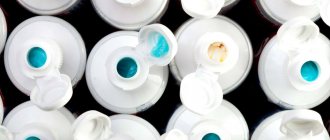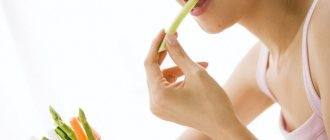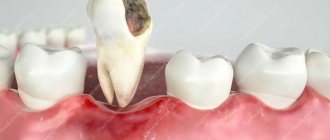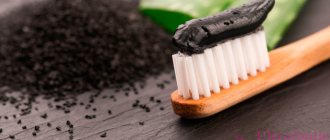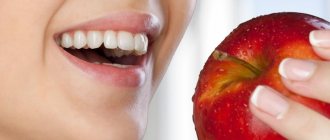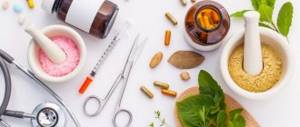Every woman knows recipes for homemade face masks. The effect of using natural ingredients is amazing. There are also several effective remedies for cleaning teeth that are easy to prepare from available ingredients.
Do you know how to make your own toothpaste? For you - information about the beneficial properties of homemade teeth cleaning compositions, simple recipes. After a month of using homemade paste, you will certainly be pleased with the results.
The benefits of natural ingredients
On store shelves there are tubes with cleansing compositions from well-known manufacturers for every taste and budget. Why do some people prefer homemade oral hygiene products? Are they doing the right thing?
Dentists and herbalists are sure: it makes sense to spend half an hour creating toothpaste from natural ingredients. If the proportions are strictly observed and used correctly, the home remedy will cope with the care of teeth and gums no worse than ready-made analogues.
Advantages:
- absence of artificial dyes, preservatives, synthetic fragrances, harmful surfactants (in cheap pastes), aggressive chemicals;
- active effect on dental tissue, strengthening enamel;
- delicate cleansing, active dissolution of plaque, slight lightening of the top layer;
- pleasant freshness of breath after using natural paste: mandatory components – mint essential oil, lemon juice;
- good disinfecting properties: after hygiene procedures with homemade paste, the number of bacteria is noticeably reduced: the use of valuable esters and aloe vera gel has a positive effect on the microflora of the oral cavity;
- soft abrasives polish the enamel without damaging the top layer;
- instead of synthetic components that form foam, natural soap made from natural ingredients is used;
- the cost of homemade formulations is affordable for anyone who pays attention to the health of their teeth and gums. The components are easy to find in a pharmacy, herbal products or natural cosmetics store (natural handmade soap).
Natural soap protects homemade paste from drying out, glycerin gives a uniform consistency and precipitates hard substances. Add ethers and pharmaceutical substances only in the specified quantities.
Why does it appear and how to get rid of a yellow coating on a child’s tongue?
We have the answer! Read about the symptoms and treatment of oral leukoplakia at this address.
Beneficial properties of plant components
Homemade toothpaste is also good because you select and adjust its composition at your discretion. Therefore, before you start preparing it, it is important to decide which ingredients and for what purpose you want to use according to a particular recipe.
Useful properties of plants:
- sage – has a beneficial effect on gums that are prone to bleeding;
- thyme – excellent at fighting bacteria in the mouth;
- cloves – relieves pain in bone tissue;
- rosemary – has a good effect on blood circulation in tissues;
- peppermint - used to give freshness to the breath, and also effectively removes inflammatory processes and pain during the development of caries;
- coconut – has an antibacterial effect and destroys various fungi, thereby protecting against caries;
- turmeric is a natural bleach, don’t let its bright orange color scare you, it will only stain your brush;
- baking soda - destroys harmful microorganisms and bacteria, eliminates plaque on the surface, as well as bad breath, which contributes to the acquisition of a yellow tint to teeth;
- sea salt – combines antibacterial properties and a rich set of minerals and trace elements, which has a positive effect on the condition of teeth and gums;
- olive is a natural whitening agent, eliminates bacteria in the oral cavity, stops the formation of plaque, strengthens bone tissue and gums;
- tea tree is an excellent antiseptic and has an antibacterial effect;
- honey – fights plaque on enamel, has bactericidal properties;
- orange – destroys germs and many types of infections;
- cinnamon - shows the greatest activity in suppressing Streptococcus mutans (a bacterium that provokes the development of caries) and Lactobacillus plantarum (a bacterium that causes diseases of the soft tissue of the gums);
- clay (bentonite) – has bactericidal properties, includes a set of microelements that have a beneficial effect on the general condition of the oral cavity;
- clay (white) – whitens teeth well and strengthens enamel, an excellent antibacterial agent;
- cloves – quickly relieves painful sensations in bone tissue, inhibits pathogenic bacteria;
- Lemon peels are a product with a whitening and antibacterial effect.
Action
After a month of using the natural product, the first results appear. If all recommendations are followed, the positive effect of use is noticeable.
Home remedies have a positive effect on tooth and gum tissue:
- remove plaque;
- freshen breath;
- reduce the number of harmful bacteria;
- prevent rotting processes in the mouth;
- strengthens teeth and gums.
Note! Violating the proportions, using coarse abrasives, or rubbing the surface too hard will do harm, not good. If you are not attentive to details, buy ready-made paste at a store or pharmacy.
Important details of remineralizing paste
It is very important to note that remineralization is not a process that only occurs in the mouth, and that simply using a toothpaste (like the one above) with a higher concentration of minerals is unlikely to be enough to help your teeth.
Remineralization is a whole-body process, and in order for this to happen, the body must have adequate levels of certain nutrients, especially fat-soluble vitamins and certain minerals. When I was actively working to remineralize my teeth, I focused on eating a very specific, nutrient-dense diet, reducing mineral binders like phytic acid in the foods I ate, and adding other lifestyle factors that increased nutrient levels. substances.
These additional factors, such as consuming enough minerals and fat-soluble vitamins, are important not only because they support the body as a whole, but also because they create more mineral-rich saliva, which is the body's system for delivering essential nutrients to the teeth.
Useful tips
Are you interested in cleaning compositions that are easy to prepare at home? Have you decided to make your own pasta? Pay attention to the recommendations of dentists and people who successfully use natural products for hygiene measures.
Creating the perfect toothpaste: 10 important rules:
- use only fresh natural ingredients purchased at a pharmacy or supermarket;
- carefully measure the amount (volume) of each substance: a skew in one direction or another will change the properties of the cleansing product. To prepare some formulations, you will need a scale on which you can measure 1–2 g of certain ingredients;
- Use foaming compounds only from natural ingredients. Handmade soap is sold in specialized stores;
- do not exceed the number of drops of essential oils: a high concentration of active esters causes irritation of the gums;
- For the first time, prepare a minimum portion of homemade cleansing composition. Test the action and observe the reaction of the oral tissues. Try several recipes, see which composition is more effective;
- never prepare a large volume of a natural product: during storage, the properties of the product deteriorate, essential oils evaporate;
- read the recipe carefully, pay attention to the shelf life of the finished product: some cleaning compositions are stored for no more than five hours, others are approved for use for 2-3 weeks;
- Place the prepared mass in a clean glass jar of cream or other cosmetic product. Store natural paste in a cool place, avoid hot rooms;
- Use the natural remedy twice a day as you would a regular toothpaste. Do not rub your teeth too hard: if you have baking soda, you risk scratching the enamel;
- If your gums become irritated or burning, stop using the homemade cleansing product. Analyze what caused the problem: perhaps you violated the proportions or brushed your teeth and gums too actively with a hard brush.
How to make natural toothpaste with your own hands?
Hi all! So we do the same actions every day and don’t think much about why we still get sick and feel bad. Yes, we may be planning to go to the pharmacy, buy another painkiller for the head, etc. But this does not solve the cause of minor ailments, which may later result in illness.
And, after all, the body clearly tells us that it does not like this or that product. But, as a rule, the majority of us do not hear ourselves. I haven’t bought anything for the oral cavity in the store or pharmacy for a long time. Because I read the ingredients and they are all not safe, I assure you. Therefore, we will prepare natural toothpaste today.
Someone will now say “well, let’s go to Taiga and live in ecology, eating fruits and berries.” But, not so much, of course, friends! We are city dwellers, which means we need to learn to live in the city and be healthy without pharmacies and doctors. How? Choose quality personal care products. Take the time to read the label of your new cream. There will be something to think about!
Marketing move
Many natural care products have already appeared and are appearing every day. But! The majority of industrialists only make money from us using the words “natural, organic, bio, eco-friendly” for spectacular marketing campaigns.
Now everyone is buying into these words and few people read the labels under these big names. And, there is still the same chemistry, derivatives of gasoline, kerosene and oil, only under different names.
A selection of the best recipes
Before starting the procedures, be sure to go to the dentist, show two or three prescriptions that interest you. Your doctor will tell you which homemade toothpaste is most effective and safe for your oral condition. Find out how often you need to change the cleaning composition.
Advice! If the enamel is hypersensitive, use mixtures based on fine abrasives (chalk, white or blue clay). The smallest particles that do not scratch the top layer clean the teeth just as thoroughly as baking soda or sea salt in natural toothpaste. Supplement your oral care with decoctions of chamomile, oak bark, and calendula.
For sensitive teeth
Ingredients:
- glycerin – ½ cup;
- esters of cloves and mint – 6 drops each;
- myrrh oil – 35 drops;
- cosmetic white clay - half a glass.
Combine the ingredients in a glass container until smooth. After cleansing the mouth, pleasant freshness remains for a long time. Ideal for sensitive teeth. Store for no more than a week in a cool place.
Homemade mint paste
Components:
- glycerin – 300 g;
- neutral natural soap – 200 g;
- chalk – 500 g;
- mint oil – 5 drops;
- carmine (natural dye) - a little, optional.
Mix the ingredients, add boiled water: the mixture should be of medium thickness so that it is convenient to brush your teeth. Keep the product in a glass jar at a temperature of +16...+18 degrees. The composition is good for two weeks.
How to increase saliva production in your mouth
The "use it or lose it" principle applies when discussing saliva production. We must use our ability to produce saliva or fight dry mouth and all diseases that are accompanied by decreased saliva production. Although we naturally produce extra saliva when we eat, the additional benefit to our health from increased saliva is offset by the primary job of saliva during eating to begin the digestion process. Therefore, it may be helpful to increase saliva production through other methods, such as:
Step 1
Collect the saliva in your mouth into a “puddle” on your tongue. Now, using your throat muscles, pull the saliva back and forth from the back of your tongue to the back of your front teeth, and then back again several times (we recommend 30-50 repetitions). With practice, this action will increase the amount of saliva present in the mouth.
Step 2
Once you have a large amount of saliva on your tongue, buy teeth and gums with increased saliva! We call spit whistling "splattering" because it's like you're whistling and scrubbing at the same time. Swish with the increased saliva for a minute or two, then swallow it and let the saliva support digestion in your stomach! This is such a simple technique that even small children can do. Have you ever made your own toothpaste? Share your recipe and thoughts below!


